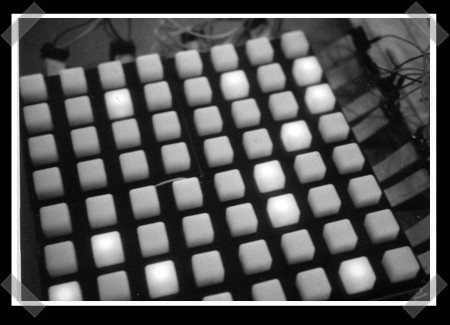
[Ewan Hemingway] tipped us off about his new Android app, Androidome. This is the first one he’s turned out after going through our Android development tutorials. It combines an app running on his Android 2.1 device with a computer running Max/MSP 5. The two don’t needed to be tethered, they just need to be on the same wireless network. This won’t be the best solution if you’re doing live performances, as the buttons on the screen end up being quite small. But as you can see after the break, it’s a great way to get into working with the Monome interface and decide if you want to build a dedicated physical version of the tool.
















